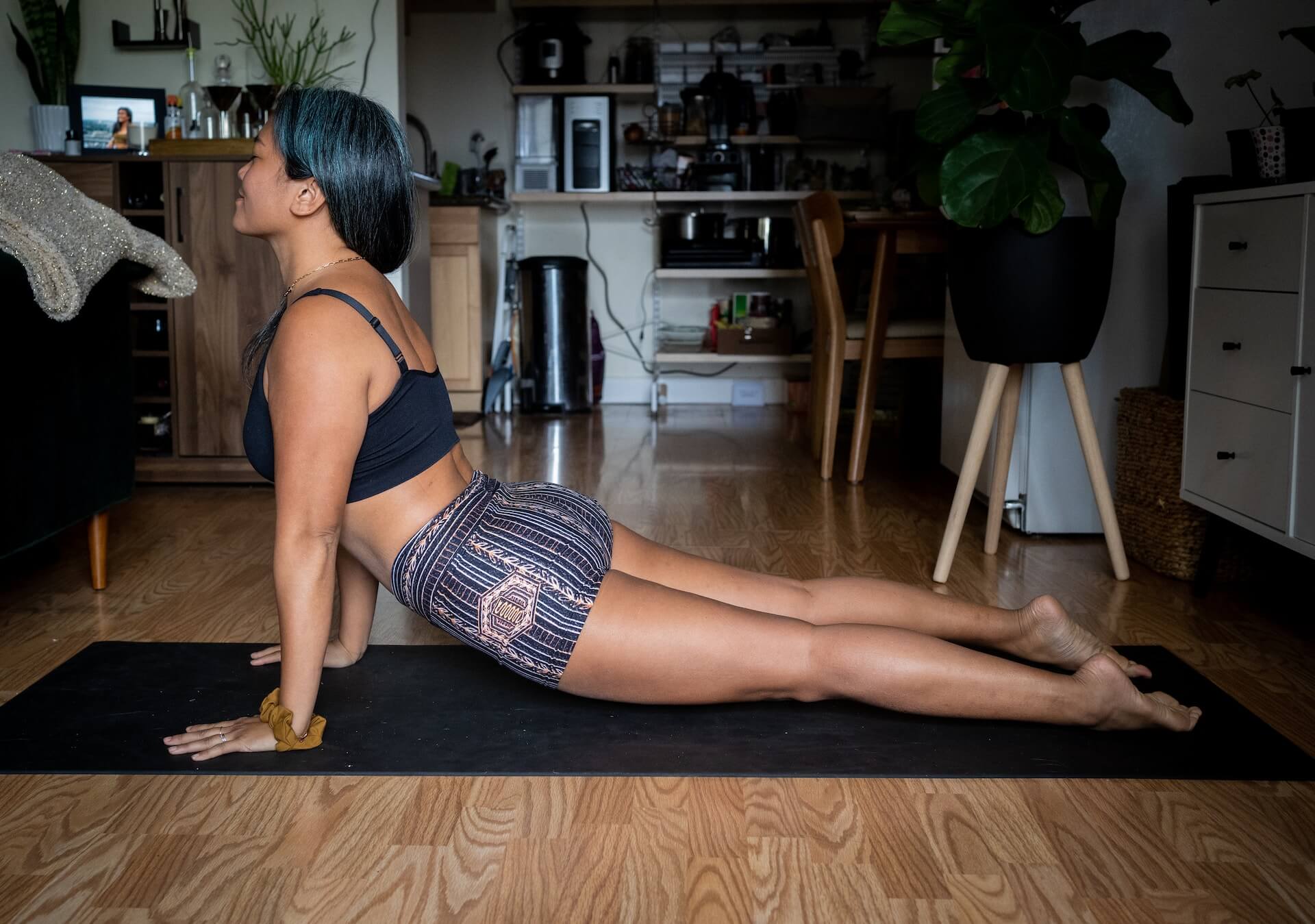16 Jul 2023
Balancing Doshas Through Back-Bends
by Brittany Woodard
In the ancient science of Ayurveda, yoga is considered an integral part of maintaining physical, mental, and spiritual well-being. Among the various yoga practices, back-bending asanas hold a special place in Ayurvedic philosophy due to their profound impact on spinal health and vitality. Back-bending asanas, known as “Bhujangasana” or “Cobra Pose,” “Ustrasana” or “Camel Pose,” and “Dhanurasana” or “Bow Pose,” are revered for their ability to activate specific energy centers and enhance the flow of prana (life force) through the body. In this blog post, we explore the significance of back-bending asanas from an Ayurvedic perspective and their profound benefits on the mind, body, and soul.
Understanding Ayurveda and the Vedic Approach to Yoga
Ayurveda is an ancient holistic healing system that originated in India over 5,000 years ago. Rooted in the Vedic scriptures, Ayurveda emphasizes the balance between the body, mind, and consciousness to achieve overall well-being. Similarly, yoga, which evolved alongside Ayurveda, aims to harmonize the individual with the universe through a range of physical postures (asanas), breathwork (pranayama), and meditation (dhyana).
Back-Bending Asanas and Spinal Health
In Ayurveda, the spine is considered the physical and energetic pillar of the body, housing the central nervous system and the subtle channels of energy known as nadis. By incorporating back-bending asanas into our yoga practice, we can invigorate the spine, promoting flexibility, strength, and alignment. Regular practice of these asanas can be especially beneficial for individuals with Vata or Kapha dosha imbalances.
Bhujangasana (Cobra Pose) Bhujangasana stimulates the heart and lung meridians, enhancing blood circulation and oxygenation. It also helps alleviate lower back pain and strengthens the abdominal muscles, promoting better digestion. From an Ayurvedic standpoint, this asana targets the Manipura chakra, associated with personal power and transformation, fostering a sense of confidence and willpower.
Ustrasana (Camel Pose) Ustrasana opens up the chest and stretches the entire front of the body, stimulating the Anahata chakra, the center of love and compassion. This asana releases tension in the shoulders and neck, which are common areas for Vata accumulation. Ustrasana also stimulates the digestive fire (Agni), aiding in the elimination of toxins and promoting better metabolism.
Dhanurasana (Bow Pose) Dhanurasana stretches the entire front of the body, including the abdomen, chest, and thighs. It activates the Swadhisthana chakra, which governs creativity and emotional balance. This asana is particularly useful for balancing excess Pitta dosha, as it releases built-up heat in the body and calms the mind.

Energetic Benefits of Back-Bending Asanas
In Ayurveda, the body’s subtle energy system revolves around the concept of prana, the life force that animates all living beings. Back-bending asanas are believed to activate the Sushumna Nadi, the central channel through which prana flows, balancing the ida and pingala nadis (left and right channels) to achieve harmony.
Moreover, by practicing these asanas, energy is directed upwards, nourishing the higher chakras and fostering a deeper connection with the spiritual self. This enhanced pranic flow clears energetic blockages and promotes emotional release, leading to a profound sense of liberation and joy.
Ayurvedic Dosha Considerations
According to Ayurveda, each individual possesses a unique combination of the three doshas – Vata, Pitta, and Kapha – which influence their physical and psychological characteristics. Understanding one’s dominant dosha can help tailor the yoga practice to suit specific needs and imbalances.
Vata Dosha: Those with a dominant Vata constitution tend to have a slender frame, experience dryness, and are prone to anxiety and instability. Back-bending asanas can be grounding and stabilizing for Vata individuals, helping to reduce nervous tension and promote relaxation.
Pitta Dosha: Pitta-dominant individuals are usually of medium build and have strong digestion. However, they can be prone to anger, irritability, and inflammation. Cooling back-bending asanas can help balance excess heat and cultivate a sense of surrender and humility.
Kapha Dosha: Kapha individuals typically have a sturdy build, and they may struggle with lethargy and stagnation. Dynamic and invigorating back-bending asanas can stimulate their energy levels and boost enthusiasm.
Precautions and Modifications
While back-bending asanas can be incredibly beneficial, they also require proper alignment and awareness to prevent injury. It’s essential to warm up adequately before attempting deep backbends and avoid overexertion. If you have any pre-existing spinal or muscular issues, it’s best to consult with a qualified yoga instructor or healthcare professional before incorporating these poses into your practice.
Conclusion
Incorporating back-bending asanas into our yoga practice can be transformative, not only for the physical body but also for the mind and spirit. From an Ayurvedic perspective, these postures have the potential to align and invigorate the spine, balance the doshas, and awaken the flow of prana, promoting a state of holistic well-being. As we delve deeper into our yoga practice, let us embrace the wisdom of Ayurveda, nourishing our bodies and souls through the elixir of back-bending asanas.